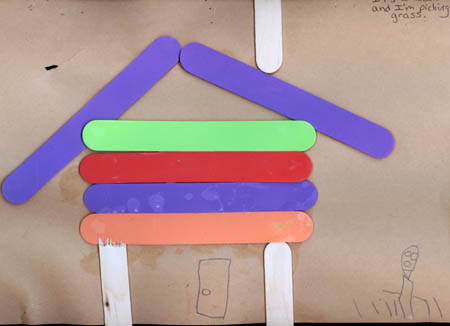
Laura Deluca and Sandy Dunn
Pershing Early Learning Center
Decatur, Illinois
Decatur is a community of about 76,000 in Macon County. The Pershing Early Learning Center in northwest Decatur houses 17 half-day prekindergarten classes for at-risk children, 6 half-day inclusive classes, 7 self-contained early childhood special education classes, and a parent-involvement program for children from birth to 3 years old. Children often enter the program at age 3 and attend until they reach kindergarten age. The lead teacher in the classroom that participated in the House Project, Laura Deluca, has been teaching prekindergarten for 15 years. Laura and her co-teacher, Sandy, have been working together for 3 years and have implemented many projects with the children.
When this project began, the 3- and 4-year-olds in Laura and Sandy’s morning and afternoon classes had already participated in two long projects and a few shorter investigations. The project began in early February and lasted about 2 months.
Phase 1. Beginning the Project
The House Project began when the class was playing with the story The Three Little Pigs. The teachers had recently read different versions of this familiar story and acted it out many times (Figure 1).

The children retold the story, and they represented their understanding through drawing. The many ways that they represented their knowledge reflect their interest in the topic (Figures 2-7).
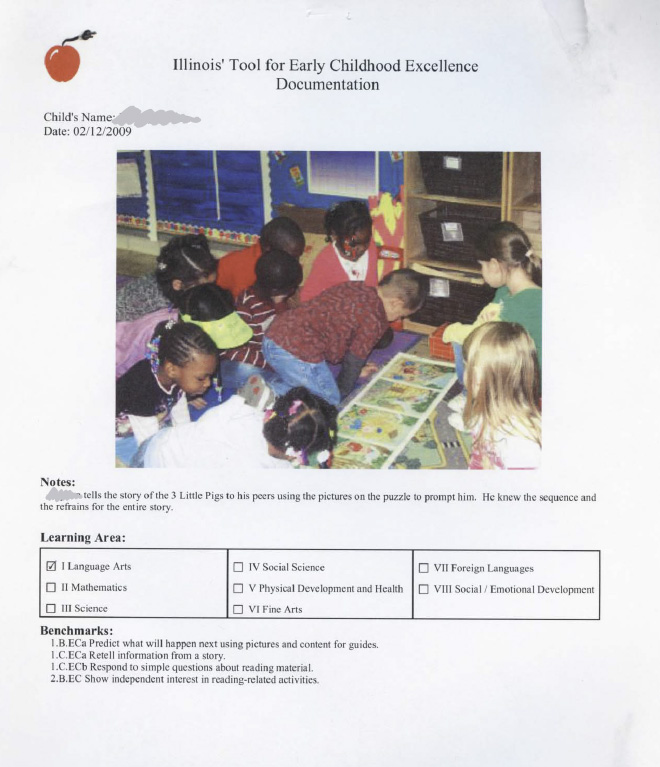
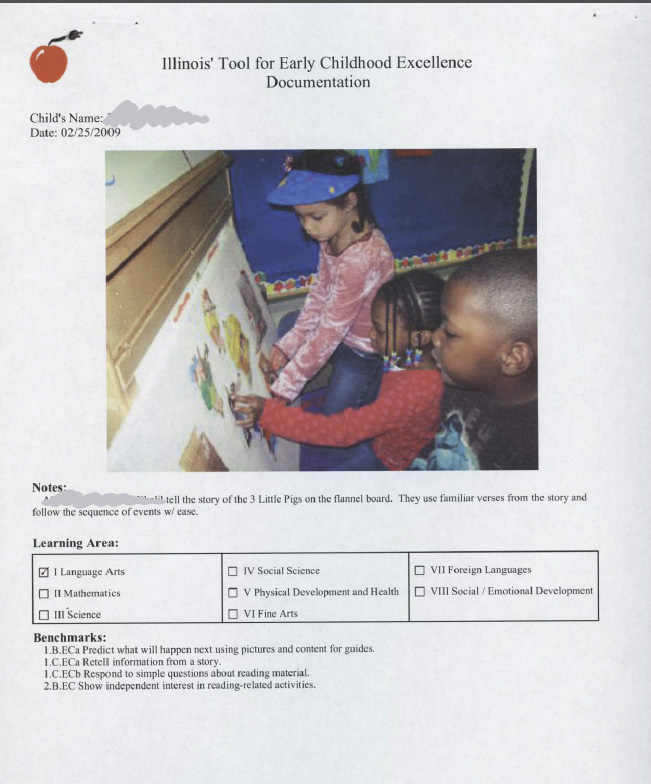
| The Three Little Pigs By Bobbie, age 5 years, 2 mos. | The Three Pigs By Desiree, age 4 years, 6 mos. |
|---|---|
| The first pig built his house outa’ straw. The second little pig built his house outa’ sticks. | Once upon a time there’s three pigs. Little pig, little let me in!!! No. He blows and blows, then blows the house down. Little pig let me in!!! No. Where my chinny chin is. Then he blows the house down. Little pig let me in!!! No. |
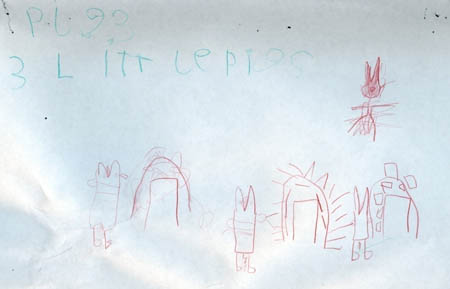
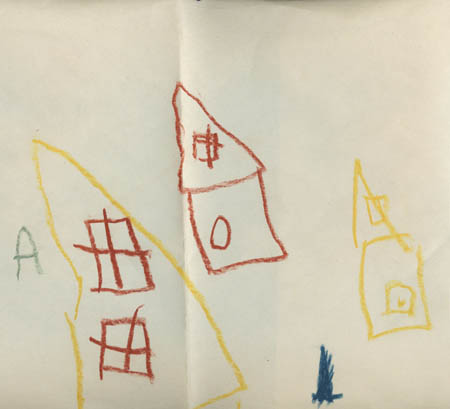
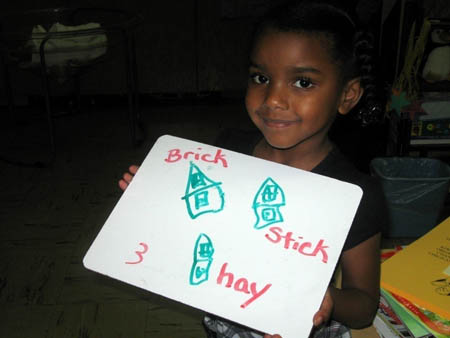
During these story re-telling activities, the children became especially interested in the brick house. Many of them were excited to share that they lived in brick houses. We helped the children think about their own homes, and they dictated ideas for a web about what they knew about houses (Figures 8-10). They also recorded information about their own homes with their families as a homework activity.
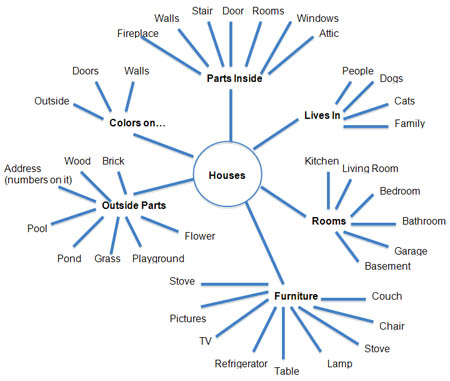
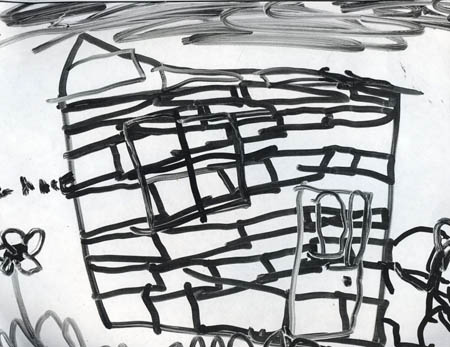
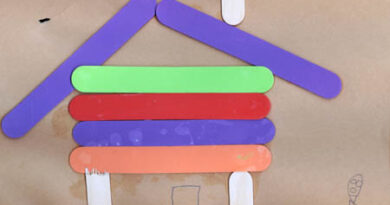
At the beginning of the project, the children gained basic knowledge about houses. This included learning about types of houses and discovering the features of houses, such as stairs, windows, doors, roofs, and chimneys. It was a time of discovery, vocabulary building, and problem solving for the class.
Early activities and investigations included the following:
- An investigation of their homes, conducted by children and their parents as a homework assignment
- Graphing types of homes—who lives where?
- Graphing which children and teachers live in brick houses
- Investigating bricks
- Building with cardboard bricks
- Sketching our dollhouse
- Studying magazine pictures
- Hands-on experiences with building materials: bricks, wood, nails, shingles
- Discovering a favorite type of house in the book A House is a House for Me—a tree house!
The children were soon interested in representing what they knew about houses in their own ways (Figures 11-19), including the following:
- Paper collage houses
- Houses made of milk cartons
- Houses created with recycled boxes
- Paintings of houses
- Marker board sketches
- Block constructions
- Workshop dramatic play
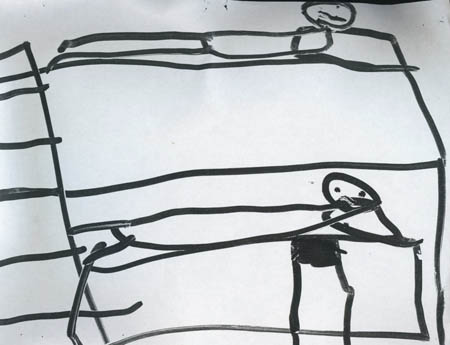
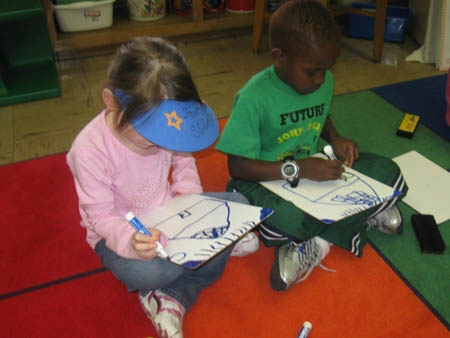
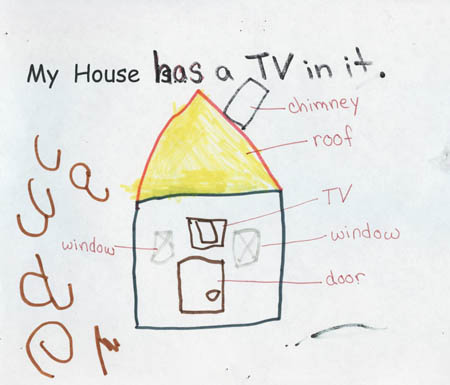
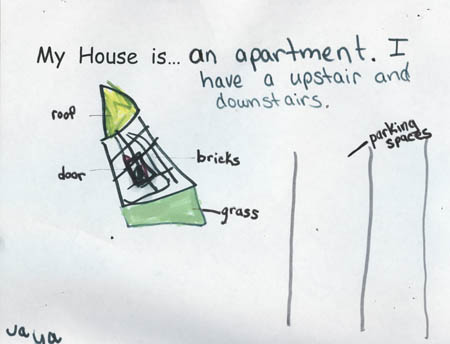

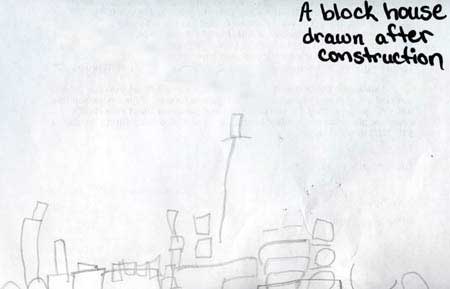
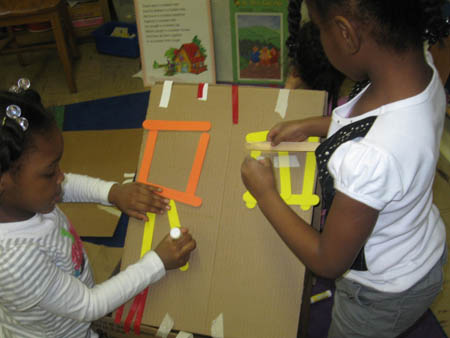


Phase 2: Developing the Project
Some of the cardboard houses that the children built included features that they were thinking about, such as windows, roofs, doors, bricks, and even stilts for a tree house. They represented what they knew based on their study of their own homes and the story The Three Little Pigs.
However, the teachers noticed that some children seemed more engaged with the use of tape than with representing their understanding of houses. We decided that they might need more focused, firsthand experience to pique their interest.
We decided to take a walk through our school neighborhood to observe types of houses and record their features (Figures 20-30). Children signed up to observe various features on our House Hunt. They used tally marks and representational drawings to record and report on their findings. Some tallied colors of houses, and some tallied the number of chimneys, stairs, steps, and garages.
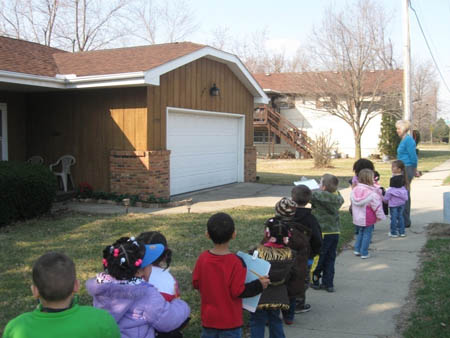

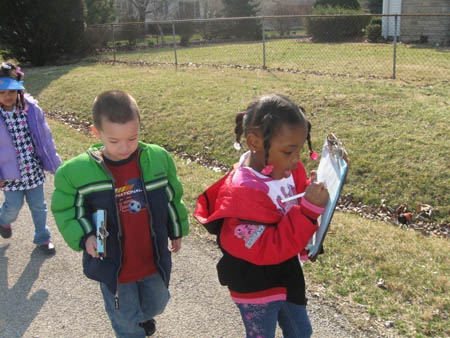

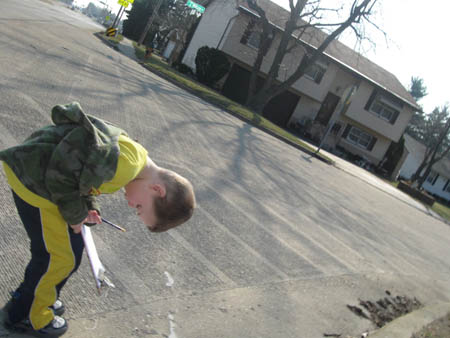
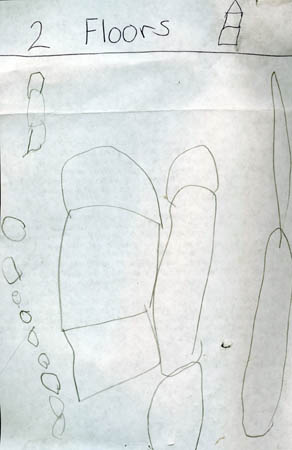
Things We Saw on Our House Hunt
- I was looking for garages. There were cars in them. (Ahli
- We saw little spiky gumballs. (Desiree
- I was looking for little one floor houses. (Bobbie)
- The roofs were made out of something. (Cerise)
- I saw chimneys and garages, and we walked on the grass so we wouldn’t get run over, and we didn’t knock on doors. (Quinton)
- I saw a door on every house. (Jonae)
- I see a door with two windows on a garage. (Ezekiel)
- I saw windows on the houses. A lot. (Brandon)
- I saw a brown and black house. (Pat)
- Red house. (Jonas)
- We saw a porch and chimneys. (Shaniya)
- Doors. (Keshua)
- We saw rectangle doors and windows. (Devonn)
- Garages for cars and motorcycles and limos. (Keyvonn)
- Three white houses. (Ceci)
- Sidewalks. (Mardon)
- Two upstairs houses. (Lakshmi)
- Motorcycles on the road and a red one in the driveway. (Harry)
- We saw houses made of bricks. (Jeremiah)
- We saw trees with pinecones falling. (Deren)
- We saw power lines. (Vic)
Figure 26. With the teachers’ help, the class compiled a list of what they observed on their walk.
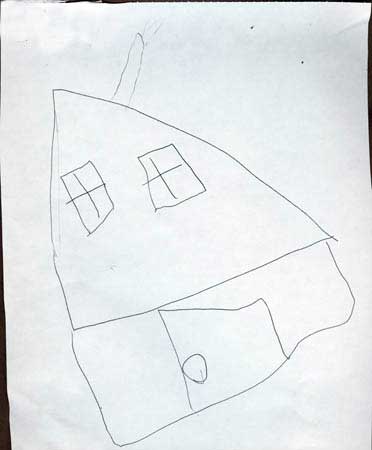
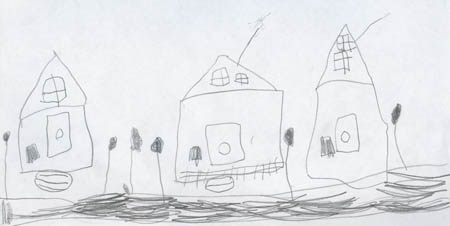
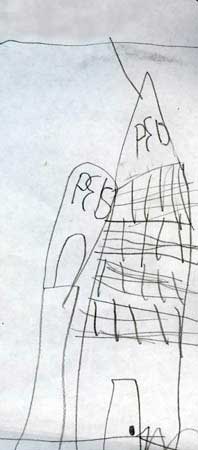
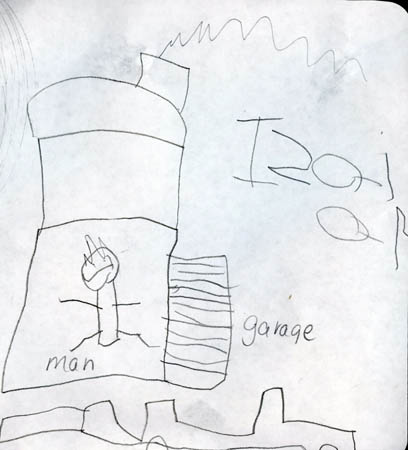
Phase 3: Concluding the Project
Constructing a Pet Hotel
After gathering all of the House Hunt data and sketching what they knew, the children decided to build a big kid-size house for the classroom. The process of building this house involved many activities (Figures 31-34):
- Children brainstormed a list of all the types of houses that could be made.
- A committee narrowed the choices of the kind of house to build to three.
- The morning and afternoon classes voted to make a final choice.
- The morning and afternoon classes used the computer to investigate house plans.
- The children provided input on window placement, doors, etc.
- All the children helped to create (and then play in) the Pet Hotel.
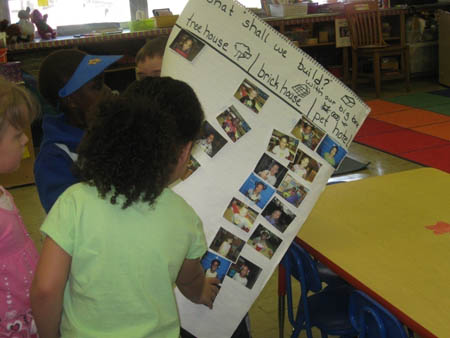
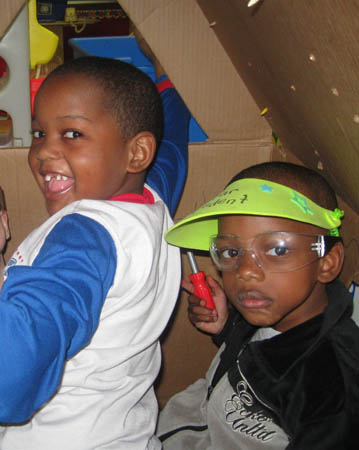
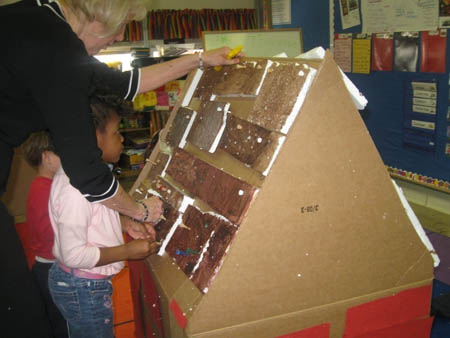
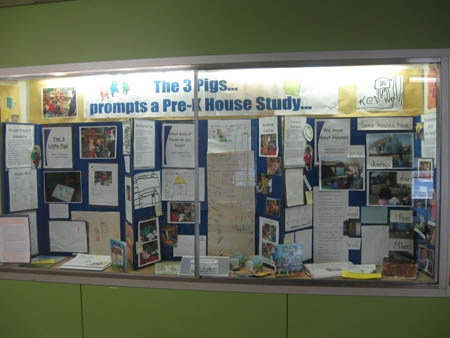
Teacher Reflection
Laura’s reflections: I am pleased with the level of representation that this class has reached. This group of mostly inexperienced 3- and 4-year-old at-risk preschoolers has grown so much this year over the course of two longer projects and a few shorter investigations. We have been teaching investigation skills and working to establish a sense of wonder in the children, but during the House Project, we felt that most of the children were truly on their way to being real investigators!
This topic was a meaningful one to the children because it took place during a time of seasonal transition when they heard many discussions about weather and shelter. I am learning to allow them more time to experience concepts firsthand. For example, it was a good idea to go back and re-experience the topic through our house walk. The walk sparked a renewed interest and gave the children new ideas to represent, such as two story and garage.
I believe that children in my class met a majority of the Illinois Early Learning Standards, built vocabulary skills, developed a sense of wonder, and experienced meaningful uses for basic skills, like writing, reading, counting, and problem solving.


 Printer-friendly PDF
Printer-friendly PDF Printer-friendly PDF
Printer-friendly PDF